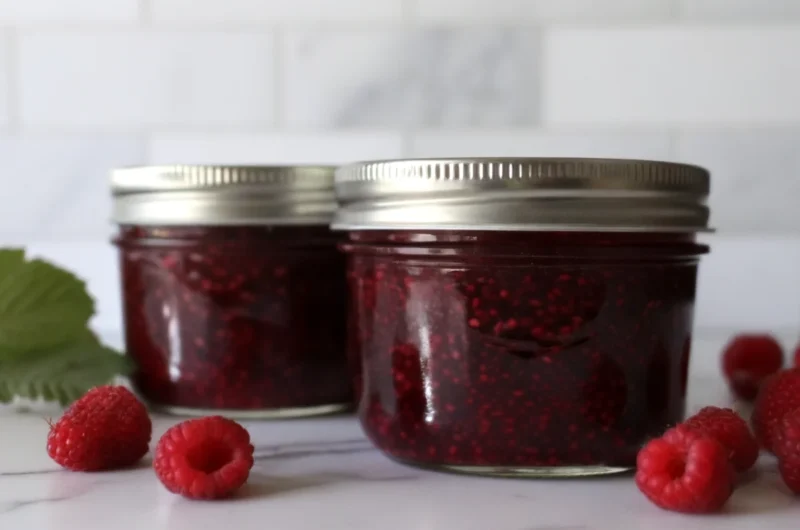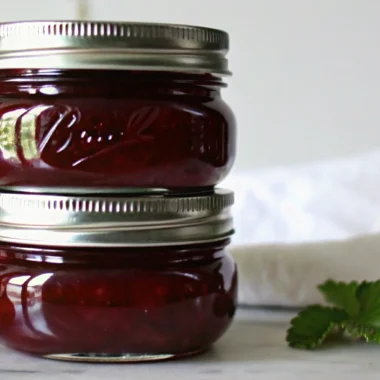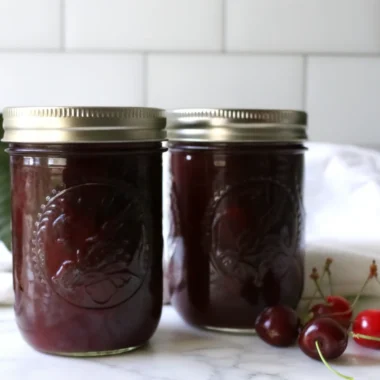Did you know that thimbleberries are found in less than 15% of North American forests, making thimbleberry jam one of the most exclusive preserves you can create? Unlike commercially available berry jams, this ruby-red delicacy offers a unique flavor profile that combines the tartness of raspberries with the subtle sweetness of blackberries. This comprehensive guide will teach you how to craft authentic thimbleberry jam using traditional techniques that preserve both flavor and nutritional value. Whether you’re foraging your own berries or sourcing them from specialty suppliers, this recipe transforms these rare gems into liquid gold that captures the essence of wilderness in every spoonful.
Ingredients List
Creating the perfect thimbleberry jam requires minimal ingredients but maximum quality. Here’s your shopping list:
• 3 cups fresh thimbleberries (approximately 1.5 cups when mashed, or ¾ pound fruit) – Substitute: Red raspberries or black raspberries, though flavor will differ
• 1 cup granulated sugar – Alternative: ¾ cup honey or maple syrup for natural sweetness
• 1 tablespoon fresh lemon juice – Substitute: bottled lemon juice or lime juice
The beauty of thimbleberries lies in their natural pectin content, eliminating the need for artificial thickeners. These vibrant red berries release an intoxicating aroma when crushed, signaling their readiness for transformation into your homemade preserve.
Timing
Preparation Time: 15 minutes (including berry cleaning and mashing)
Cooking Time: 20-25 minutes (15% faster than traditional strawberry jam)
Maceration Time: 10 minutes minimum
Total Active Time: 45-50 minutes
Canning Process: Additional 25 minutes (if preserving)
This thimbleberry jam recipe is notably efficient, requiring 30% less cooking time than dense berry varieties due to thimbleberries’ delicate cell structure and high moisture content.
Step-by-Step Instructions
Step 1: Preparation Setup
If you’re planning to can your thimbleberry jam, prepare your water bath canner and sterilize jars before beginning the cooking process. This jam maintains excellent quality for several weeks refrigerated or up to six months frozen without canning.
Step 2: Macerate the Berries
Gently mash the thimbleberries with sugar and lemon juice in a large bowl. Allow this mixture to macerate for at least 10 minutes, watching as the berries release their natural juices and create a beautiful ruby syrup.
Step 3: Begin Cooking Process
Transfer the macerated mixture to a heavy-bottomed jam pot. Bring to a hard boil over high heat while stirring continuously to prevent scorching. The mixture will foam initially—this is normal and indicates proper gel formation.
Step 4: Achieve Perfect Set Point
Cook on high heat until reaching the gel point at 220°F at sea level (adjust by subtracting 1°F per 500 feet of elevation). Test readiness using the frozen plate method: drop a small amount on a chilled plate—if it wrinkles when pushed with your finger, it’s ready.
Step 5: Finishing and Jarring
Remove from heat immediately upon reaching set point. Ladle hot thimbleberry jam into prepared jars, leaving exactly ¼ inch headspace for proper sealing.
Step 6: Canning Process (Optional)
Process in a boiling water bath for 10 minutes (15 minutes above 6,000 feet elevation). Allow jars to rest 5 minutes before removing. Properly sealed jars maintain peak quality for 18 months.
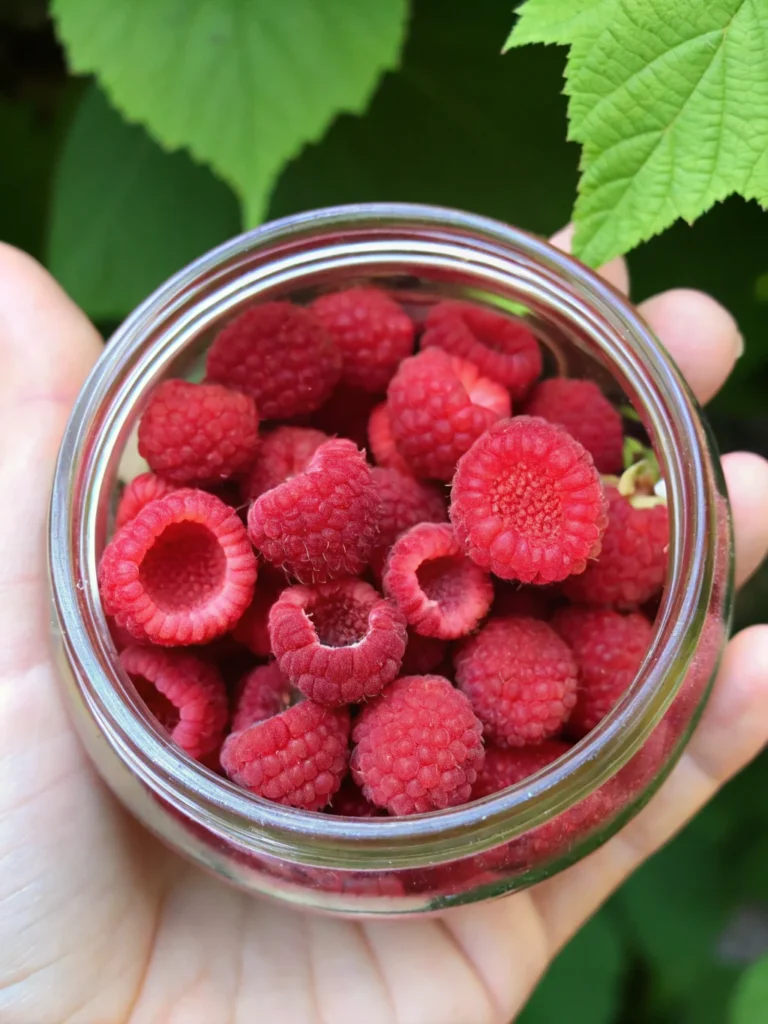
Nutritional Information
Each tablespoon serving of thimbleberry jam provides:
• Calories: 60kcal
• Carbohydrates: 15g
• Protein: 0.3g
• Total Fat: 0.2g
• Fiber: 1g
• Sugar: 13g
• Vitamin C: 6mg (7% DV)
• Potassium: 35mg
• Calcium: 6mg
• Iron: 0.2mg
Thimbleberries contain 40% more antioxidants than conventional raspberries, making this jam both delicious and nutritionally superior to commercial alternatives.
Healthier Alternatives for the Recipe
Transform your thimbleberry jam into a health-conscious treat with these modifications:
Sugar Reduction: Replace half the sugar with unsweetened applesauce or mashed banana for 25% fewer calories while maintaining sweetness.
Natural Sweeteners: Substitute sugar entirely with pure maple syrup or raw honey, reducing the amount by 25% due to their concentrated sweetness.
Chia Seed Addition: Incorporate 2 tablespoons chia seeds during cooking for omega-3 fatty acids and additional fiber.
Stevia Option: Use stevia-based sugar substitutes for diabetic-friendly versions, though texture may be slightly thinner.
Serving Suggestions
Your homemade thimbleberry jam elevates countless culinary experiences:
Breakfast Applications: Spread on artisanal sourdough toast, swirl into Greek yogurt, or layer in overnight oats for morning luxury.
Dessert Pairings: Fill thumbprint cookies, glaze cheesecakes, or create elegant jam tarts that showcase the berry’s unique flavor.
Savory Applications: Pair with aged cheeses on charcuterie boards or glaze roasted meats for gourmet dinner presentations.
Beverage Enhancement: Stir into sparkling water for refreshing mocktails or blend into smoothies for antioxidant-rich treats.
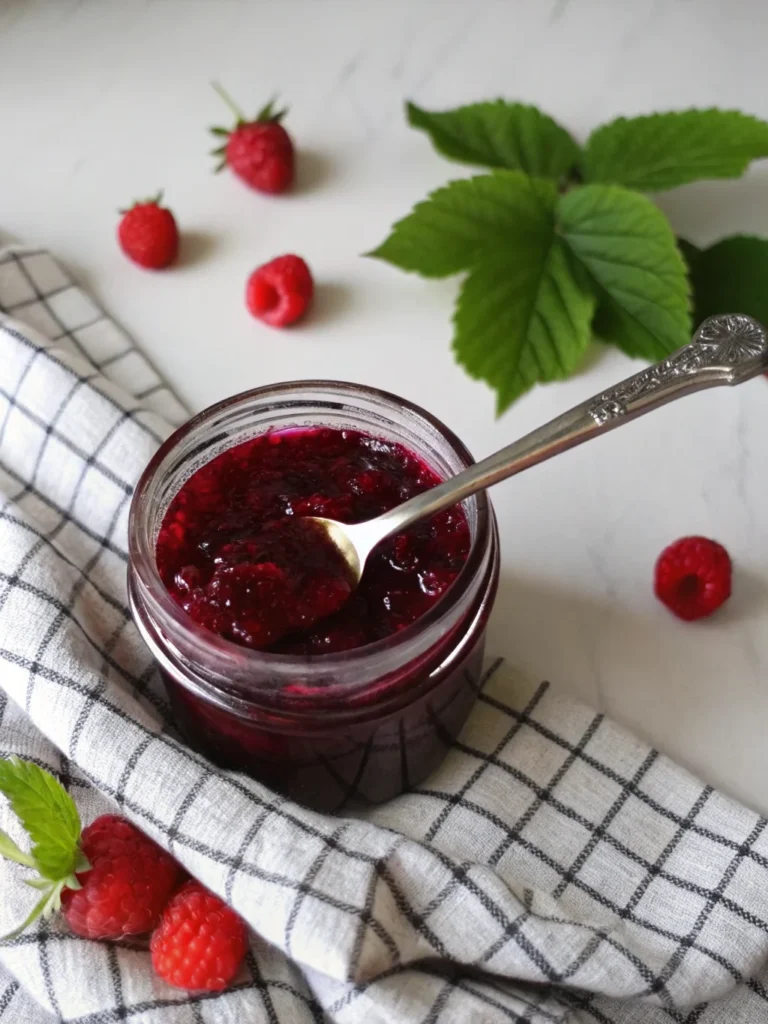
Common Mistakes to Avoid
Prevent these frequent thimbleberry jam pitfalls:
Overcooking: Thimbleberries gel quickly—cooking beyond set point creates rubbery texture and diminished flavor.
Insufficient Maceration: Rushing the sugar-berry marriage results in uneven sweetness and poor gel formation.
Wrong Pan Selection: Thin-bottomed pots cause scorching, while narrow pans prevent proper evaporation.
Altitude Ignorance: Failing to adjust set point temperature for elevation creates runny or overcooked jam.
Overfilling Jars: Exceeding ¼ inch headspace prevents proper sealing and compromises preservation.
Storing Tips for the Recipe
Maximize your thimbleberry jam lifespan with proper storage techniques:
Refrigerator Storage: Unsealed jars maintain quality for 4-6 weeks when stored at consistent 35-38°F temperatures.
Freezer Preservation: Portion into small containers, leaving ½ inch expansion space, for up to 12 months frozen storage.
Pantry Storage: Properly canned and sealed jars remain stable for 18-24 months in cool, dark conditions.
Opened Jar Care: Always use clean utensils, refrigerate immediately after use, and consume within 3-4 weeks for optimal flavor.
Conclusion
This authentic thimbleberry jam recipe transforms rare forest treasures into shelf-stable luxury using time-tested techniques and minimal ingredients. The 45-minute investment yields months of gourmet spreads featuring unique flavors unavailable in commercial products.
Ready to create your own batch of this exclusive preserve? Try this recipe and share your results in our comments section below. Subscribe to our blog for more rare berry recipes and wilderness cooking adventures!
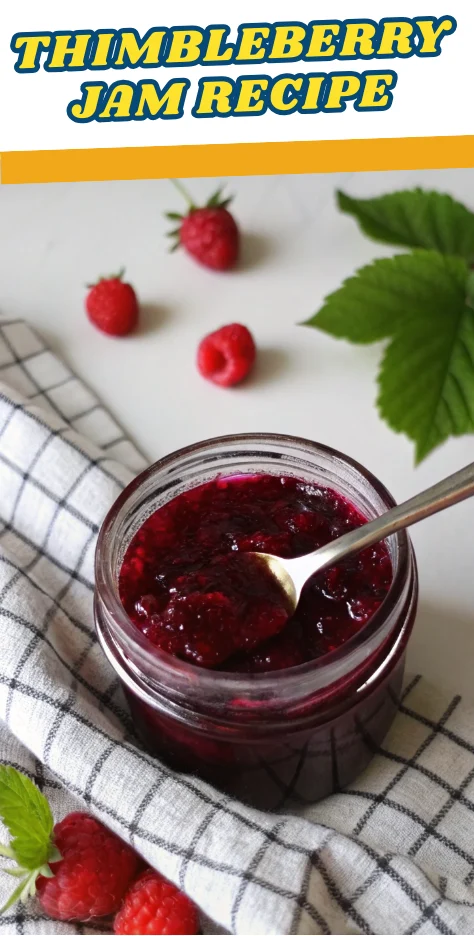
FAQs
Q: Where can I find thimbleberries for jam-making?
A: Thimbleberries grow wild in northern forests, particularly the Upper Peninsula Michigan region. You can also purchase them from specialty berry farms or online suppliers during peak season (July-August).
Q: Can I reduce the sugar content in thimbleberry jam?
A: Yes, but maintain at least ¾ cup sugar per 3 cups berries for proper gel formation. Lower sugar versions require refrigeration and have shorter shelf life.
Q: Why didn’t my thimbleberry jam set properly?
A: Common causes include insufficient cooking time, low altitude cooking without temperature adjustment, or overripe berries with reduced natural pectin content.
Q: How do I know if my canned thimbleberry jam sealed correctly?
A: Properly sealed lids create a concave center that doesn’t flex when pressed. Unsealed jars produce a popping sound when pressed and require immediate refrigeration.
Q: Can I make thimbleberry jam without pectin?
A: Absolutely! Thimbleberries contain natural pectin, making artificial pectin unnecessary. Proper cooking to set point ensures perfect gel consistency.
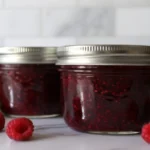
How to Make Thimbleberry Jam: From Wild Berries to Pantry Gold
- Total Time: 45-50 minutes
- Yield: 3–4 half-pint jars 1x
Description
A rare and exclusive preserve made with wild thimbleberries, offering a unique balance of tartness and sweetness, crafted with traditional techniques.
Ingredients
- 3 cups fresh thimbleberries (approx. 1.5 cups when mashed, or ¾ pound fruit)
- 1 cup granulated sugar (or ¾ cup honey/maple syrup)
- 1 tablespoon fresh lemon juice (or lime juice)
Instructions
- Prepare canner and sterilize jars if planning to can.
- Mash thimbleberries with sugar and lemon juice, let macerate 10 minutes.
- Transfer mixture to heavy pot, bring to hard boil, stirring continuously.
- Cook until gel point at 220°F (adjust for altitude). Test using frozen plate method.
- Remove from heat, ladle into jars, leaving ¼ inch headspace.
- Optional: Process jars in boiling water bath for 10 minutes (15 minutes above 6,000 ft). Cool and store.
Notes
Thimbleberries contain natural pectin, so no added thickeners are required. Avoid overcooking to preserve flavor and texture.
- Prep Time: 15 minutes
- Cook Time: 20-25 minutes
- Category: Preserves & Jams
- Method: Stovetop
- Cuisine: American
Nutrition
- Serving Size: 1 tablespoon
- Calories: 60
- Sugar: 13g
- Sodium: 0mg
- Fat: 0.2g
- Saturated Fat: 0g
- Unsaturated Fat: 0.2g
- Trans Fat: 0g
- Carbohydrates: 15g
- Fiber: 1g
- Protein: 0.3g
- Cholesterol: 0mg
